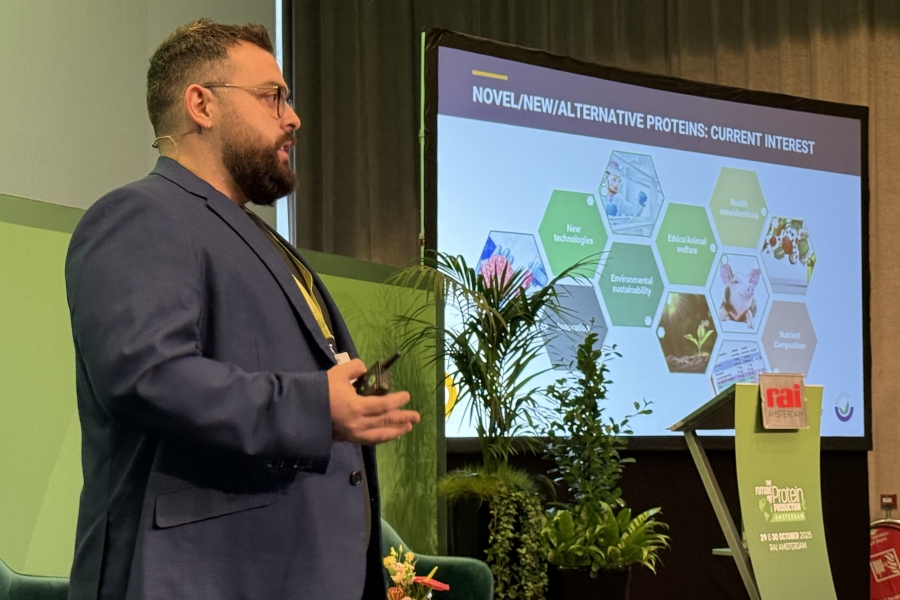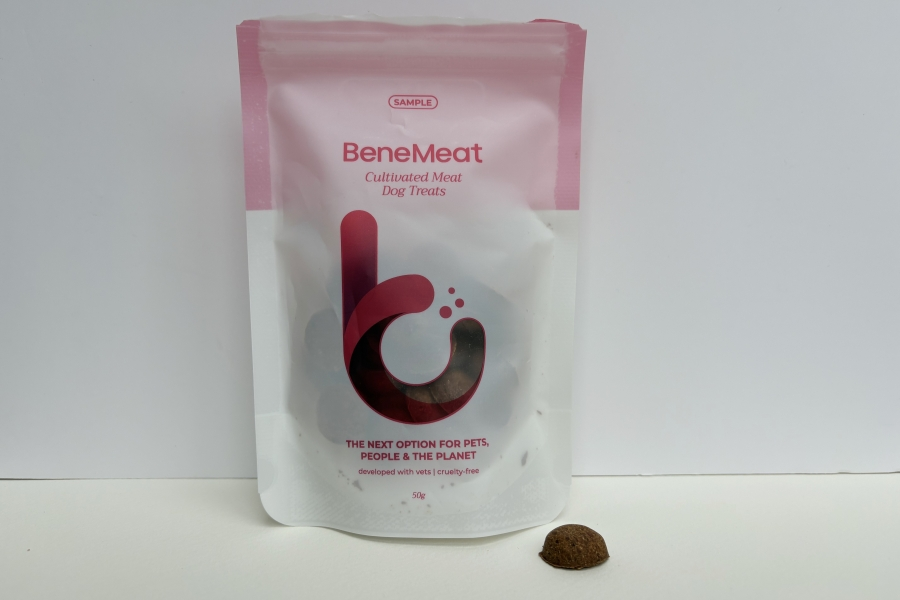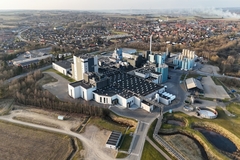
- Industry news
Industry news
- Category news
Category news
- Reports
- Key trends
- Multimedia
- Journal
- Events
- Suppliers
- Home
- Industry news
Industry news
- Category news
Category news
- Reports
- Key trends
- Multimedia
- Events
- Suppliers
Novel foods: Experts debate regulatory obstacles at Future of Protein Production 2025
Key takeaways
- Singapore and Australia offer faster approvals for proof-of-concept and investor confidence, but they are smaller, more distant markets for EU firms.
- EFSA is slower to give an opinion and cannot directly advise on scientific testing. However, EU authorization eases UK entry and carries global weight.
- Novel protein companies are advised to build one robust dataset for multiple jurisdictions and consider the pet food segment for earlier revenue and insight.

At the Future of Protein Production conference in Amsterdam (Oct 29–30), over 1,000 delegates from across the novel protein industry convened to exchange knowledge. Among the most hotly debated topics was where to apply for regulatory approval. Companies with nascent technologies and ingredients must carefully select which jurisdiction to enter first, with speed to market a determining factor.
So far, Singapore’s friendly regulatory environment has attracted European proofs of concepts, but the UK’s new cell-based regulatory sandbox may also prove to move testing grounds closer to home.
In the panel discussion — “How are novel food companies picking their markets?” — experts discussed the pros and cons of pursuing approval in different regions.

Singapore, Australia, and New Zealand were spotlighted as some of the fastest and most streamlined points of entry for novel foods. But they also come with their disadvantages.
“Getting to market faster gives you the possibility to convince investors to invest further, and that is important for start-ups because we face a ‘Catch-22.’ We need funding to submit for regulatory approval, but we need regulatory approval to get further funding,” said Eleni Ntokou, director of new product development, sustainability, and regulatory affairs at Unibio. Unibio produces novel proteins using methane, oxygen, ammonia, and minerals as its feedstocks.
She adds that starting with a smaller market like Singapore provides proof of concept, proves the safety of the product and its acceptability, and provides the opportunity to gather consumer insights.
As a counterpoint, Singapore is a small market, and European companies will have to do significant work to understand consumers there, pointed out Yvonne Dommels, regulatory and nutrition director at the Protein Brewery. The protein brewery leverages fermentation to “brew” new proteins from a sugar-rich base and a fungal strain.
The Protein Brewery has regulatory approval in Singapore, although it wasn’t its first choice. “We wanted to launch in Europe because we are based in the Netherlands. We know the market, we know the consumers, but in the end, the process took longer than expected.” Dommels notes that they pivoted for Singapore and self-affirmed GRAS (Generally Recognized As Safe) in the US under pressure to commercialize quickly.
Why the long process?
An overall sentiment across the conference was that regulatory approval for novel foods is too long globally, but nowhere has it been more frustrating than in the EU.
Long wait times are partially due to an increase in submissions for novel food applications. Climate change and the world’s growing population are spurring innovation into ever more unthinkable sources of protein.
Ermolaos Ververis, scientific officer of nutrition and food innovation at the European Food Safety Authority (EFSA), said that the number of novel food applications has drastically increased since he began working at the agency eight years ago.
“When I began my career at EFSA, we had about three or four people working on novel food dossiers. Now we have more than 25. Also, our pool of experts has increased, and we are investigating other types of collaboration with member states, who might be able to help EFSA with part of the assessment without sacrificing our independence.”
 Ermolaos Ververis, scientific officer of nutrition and food innovation at EFSA, presented on updated regulation for novel foods.Ververis’ talk focused on helping businesses better understand the updated novel food guidance that came into effect in September last year.
Ermolaos Ververis, scientific officer of nutrition and food innovation at EFSA, presented on updated regulation for novel foods.Ververis’ talk focused on helping businesses better understand the updated novel food guidance that came into effect in September last year.
Ververis gave a few examples of novel proteins currently undergoing risk assessment at EFSA, including a postbiotic protein from the bacteria Clostridium tyrobutyricum and duck cell culture-derived biomass.
EFSA guides but doesn’t direct
Another factor in Europe’s notoriously longer time-to-approval is less guidance at the beginning of the application process, especially when compared to Singapore, Australia, New Zealand, and the US.
This problem partly stems from the fact that EFSA isn’t the body that ultimately decides novel food status. EFSA is a group of scientific advisors that informs the European Commission (EC). The EC then holds a vote that needs unanimous approval from member states to declare a food novel or not.
A top pain point was that EFSA did not work closely enough with companies to guide them before they conducted expensive tests. One audience member said that a request for more data and another test would cost her company around €100,000 (US$115,000). It also means several more months’ delay.
When asked why EFSA could not provide more concrete requirements and protocols in advance, Ververis responded that “novel food guidance is not an extensive cookbook. It’s not a recipe to be followed step by step.” They use guiding principles as their model instead.
“If we wanted to have an extensive document [detailing safety tests to perform in every type of situation], it would be more than 1,000 pages. It’s impossible to cover everything, because innovation is not predictable. In a few years, we may have something totally new that is not here today.”
While he maintains that EFSA cannot provide advice on specific scientific protocols, he said the organization can assist with administrative preparation and is obligated to respond to all questions received from applicants.
EU “opens doors to the world”
In a separate panel entitled “Navigating Global Food Approvals: Industry Experiences,” which was part of the co-located Regulating the Future of Food Conference, a representative from Cargill said that, while it is difficult, European approval “opens doors to many other jurisdictions.”
One such jurisdiction is China. David Benjamin Selesko, senior regulatory affairs specialist at Arla Foods Ingredients, who was also on the panel, explained that China typically avoids being the first country to review a novel product. “Chinese regulators will first look at a novel product once you already have a response in another market, or at least you are far along in the process.”
 Cell-based quail company Vow has approval in Singapore and New Zealand/Australia for its upscale products like tallow candles. Made with quail cells, butter and herbs, the burned candles transform into a luxurious bread dip (Credit: Vow). EU approval also facilitates entry into the UK, according to Ioannis Kartanos, who is regulatory affairs manager for human and animal nutrition at the legal consultancy Argenta.
Cell-based quail company Vow has approval in Singapore and New Zealand/Australia for its upscale products like tallow candles. Made with quail cells, butter and herbs, the burned candles transform into a luxurious bread dip (Credit: Vow). EU approval also facilitates entry into the UK, according to Ioannis Kartanos, who is regulatory affairs manager for human and animal nutrition at the legal consultancy Argenta.
“If a company has a novel food dossier for the EU that is ready to go, they can use that same dossier for the UK and go very quickly to that market. The other way around [from UK to EU] doesn’t work,” he says.
Kartanos explained that when the UK split from the EU, it inherited much of its then-existing legislation. Today, there are some differences. The UK’s regulating body, the Food Standards Agency, is in many cases simpler, but not in all. One example is the calculation of exposure levels to a novel food.
“The value that you get from the EU authorization is much higher than the UK alone because, first of all, the EU is a much bigger market and secondly, you can use the same dossier to register in the UK.”
“If you prepare a dossier for the UK first, you need to modify it quite a lot to submit it to the EU authorities, and this could ultimately lead to a longer time to market,” he stressed.
Preparing for multiple markets at once
Marta Baffigo, innovation and scientific affairs and public affairs strategic partner at Cargill, said that it’s important to have a regulatory roadmap. “We start in the US or Europe, depending on where the ingredient has been developed. We then try to develop the scientific data that meets the requirements of both jurisdictions.”
Her advice echoes an approach outlined earlier in the day by Naya McCartney, senior regulatory safety scientist at Vow, an Australian company that supplies high-end restaurants with cultivated quail cells.
She advised companies seeking regulatory approval to “test comprehensively, but submit strategically.” The concept is to test as much as you feasibly can — without spending too much money and without wasting your cell mass — while considering the requirements of different jurisdictions.
“See how different jurisdictions require different data and testing. The idea is to create one large data set you can pull from for many jurisdictions.”
Step two, she continues, is to submit select data when applying for approval. “These agencies are asking specific questions. They’re not asking to dig through 30 pages of data that you’ve dumped at their feet. More data doesn’t always mean better, or safer, it just means more work for regulators.”
 BeneMeat is trialing dog treats made with 18.3% cultivated cells of mammalian origin with users who register to receive samples. Pets: Novel proteins’ best friend
BeneMeat is trialing dog treats made with 18.3% cultivated cells of mammalian origin with users who register to receive samples. Pets: Novel proteins’ best friend
Another avenue playing out in the alt-protein space is to bypass humans altogether. BeneMeat (Czech Republic) and Meatly (UK) are pioneering cultivated meat for the pet food segment, both holding regulatory registration in their respective jurisdictions.
Biotech company BeneMeat is the first cell-cultivated company to receive European registration for use in pet food. The company works with cell lines from many different species, including hamster cells, which feature in its trial dog treats. The company aims to expand its activities beyond the EU and bring its technology to global markets.
The company doesn’t have any products on the market yet, but is engaged in consumer testing. It is currently offering free samples of its dog treats to pet owners who give feedback on the product.
Meanwhile, Meatly’s Ensor points out that the pet food market has been an extremely good market for the company’s chicken cell ingredients. The company’s ingredients have all been derived from a single cellular harvest from a ten-day-old fertilized chicken egg.
“The pet food industry is an especially good market for cultivated meat because pet owners, by nature, are animal lovers,” said Owen Ensor, CEO at Meatly.
When asked if Meatly would expand into human food, Ensor said the company was open to it, “once regulation has been clarified.” Ensor explained that the UK was currently conducting a “sandbox program” to connect industry and experts to formalize standards for cell-cultivated products.
He anticipates that with the completion of the two-year project, which began this year, there will be a stronger, clearer path forward for cell-based companies.
If the UK establishes a straightforward standard for cell-based proteins in the next few years, it raises the question of whether it might become “the next Singapore,” a small, yet close-to-home testing ground for European innovators.










